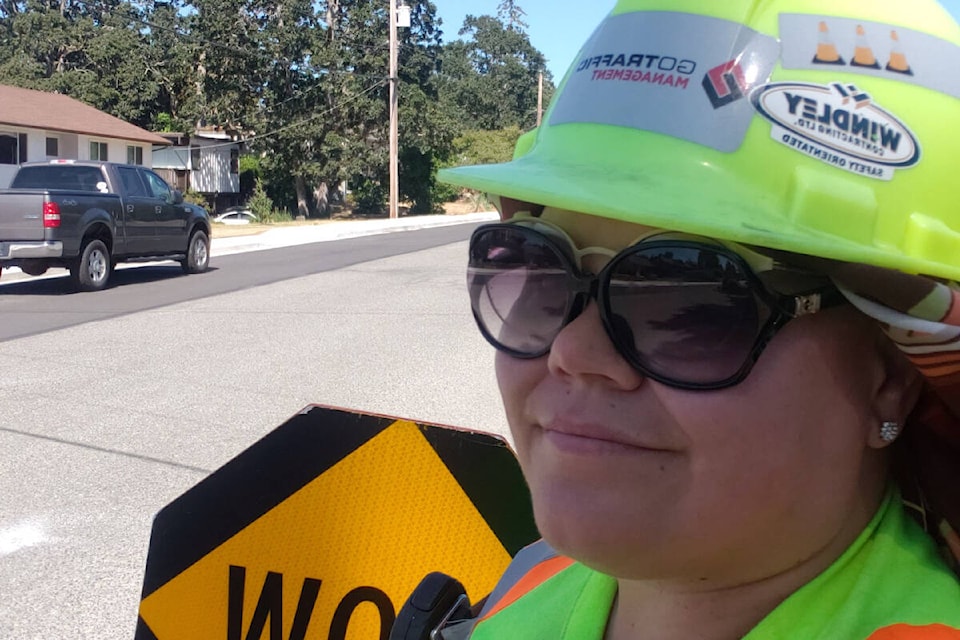A traffic controller on the West Shore is speaking out about the abuse these workers suffer – all because of impatient drivers who get angry about road construction.
“I’ve had someone get out of their vehicle and issue threats at me,” said Rachel Camire, a traffic control person from Langford who works for Universal Group. “Some yell at me, or slam their steering wheel or dashboard in anger and frustration. I understand that people can get frustrated but we’re just doing our job, trying to manage traffic. We really don’t want to keep them stopped for any longer than is necessary.”
Camire is usually found at a roadside cone zone in Greater Victoria, putting herself at risk while directing traffic to keep workers – and drivers and their passengers – safe.
“I had nine people in one day run through my stop sign and two of them almost got hit by oncoming traffic,” says Camire.
Between 2013 and 2022 in B.C., nine roadside workers were killed and 239 were injured seriously enough to miss time from work, according to WorkSafeBC statistics.
“We’re still seeing far too many people being injured or killed,” said Trace Acres, program director for Road Safety at Work and spokesperson for the Cone Zone campaign, in a statement. “Drivers have a responsibility to proceed safely through any kind of work zone to ensure that those workers can get home safely at the end of the day.”
Camire said she often sees driving behaviours that put workers and drivers at risk.
“A lot of people are distracted,” she said. “They’re on their phones but also scrolling on their car’s digital screens, brushing their hair, concentrating on what they are eating, etc.”
Speeding is another culprit. Roadside workers are often protected only by a plastic orange cone that separates them from vehicles.
Work zones are common in Greater Victoria year-round. Changing weather conditions make them even more dangerous in fall and winter.
A roadside work zone is any area next to a road where a worker may be exposed to moving vehicles. It can be fixed in one place, such as a construction site or the area around a tow truck picking up a stranded vehicle. Or it can be mobile work, such as mowing, line painting, or garbage and recycling collection.
The typical fines in B.C. for work zone violations include:
Failing to follow the Slow Down Move Over law: $173 and 3 points
Using an electronic device while driving: $368
Speeding: $196 and up
Disobeying a traffic control device: $121
Disobeying a traffic control person: $196
When approaching an AFAD:
Stop at least one car length away when the arm is down and the light is either solid yellow or red.
Don’t proceed even if there is no oncoming traffic.
Drive ahead only when the light switches to flashing yellow and the gate arm is fully raised.
When approaching any work zone, “drive like a loved one or a close friend works there,” says Acres. “Even if you’re briefly delayed, remember that those delays are necessary to help keep roadside workers safe.”
B.C. law requires drivers to:
Slow down and drive with care
Pay attention and leave your phone alone
Obey road signs, traffic control devices, and people
READ MORE: Restaurant on historic Saanich site shuts down as property on sale for $5.5M



